#DOOMonFILM
Text
Thoughts : Nope (2022)

Back in January of 2012, Jordan Peele made his breakthrough into the popular consciousness via Comedy Central’s comedic golden ticket that was Key & Peele. While both members of this pairing had achieved varying levels of success as bit players and character actors, I’m sure that nobody anticipated that the mild-mannered and deceptively intense Peele would soon become the face of modern day commercial horror and suspense media, stepping into the rare air occupied by the likes of industry giants like Rod Serling and Alfred Hitchcock. His debut film, the landmark Get Out, showed infinite potential and promise... his follow-up film, Us, while not loved as universally as Get Out, did manage to garner enough support and respect for Peele to avoid accusations of the sophomore slump... but it was his latest film, the mysteriously promoted Nope, that has left me the most extreme in terms of the juxtaposition of anticipation and curiosity. Sadly, I missed the film in theaters, and didn’t want to pay ownership price for an early rental, but the day the movie dropped to own I was on top of it, which finally afforded me the opportunity to take Nope in and share my thoughts.
youtube
Nope would probably work best as a completely blind experience, but as one of the multi-millions that saw the ad campaign initiated during the Super Bowl, building and creating my own set of expectations was inevitable. With plenty of looks to the sky and lots of ominous situations, comparisons to Close Encounters of the Third Kind felt logical but obvious, and luckily, the actual film baits and switches narratively in a way that adds tons of substance and subtext to the familiar self-imposed premise. The parallels between the in-world Gordy’s Home sitcom and the Jean Jacket situation become obvious with the help of the understated OJ, and through his eyes, we immediately shift our thinking on Jean Jacket... normally, we see a UFO as an invading force with some sort of intentionality, but much like the titular Gordy lashing out in a primordial manner on set (a location completely foreign and likely frightening to him), Jean Jacket roams the unfamiliar Agua Dulce mostly unnoticed and harmless, but lashes out once their fear response is spiked by misidentified threats (a.k.a. humans). With this new positioning of the synergy between all parties involved, we as viewers are allowed to saddle up (no pun intended) for a much needed fresh take on the UFO film trope.
Interestingly enough, this drawn parallel between Gordy’s Home and Agua Dulce also serves as the foundation for narrative subtext surrounding post-traumatic stress responses in the face of tragic losses. Though he is not presented as the main character, this illustration of post-traumatic stress is the clearest in terms of the character Jupe, the sole individual to make it through the Gordy attack not only unscarred, but acknowledged by Gordy in a non-violent manner. With this situation seemingly completely derailing what was a promising career in the entertainment industry, we find Jupe not only clinging on to any assemblance of his former past glory, but we also find him essentially trying to recreated that bridge between his fear-based morbid curiosity and a potentially dangerous foreign element in his familiar (read : safe) territory. In contrast to this stands OJ, who was also is attempting to understand sudden and violent tragic loss. OJ’s extremely reserved nature allows him to keep his distance, assess and understand the threat, and eventually, turn his tragedy into a potential opportunity to better both his life and the life of his sister Em, though the potential trade may be their actual lives if they make any mistakes. Outside of this brilliant dynamic, we also are shown lots of very real reactions to a UFO... OJ is scared but cautiously curious, Jupe is attempting to exploit the situation for monetary gain, Em shows completely believable fear and confusion responses prior to extreme bravery in the face of the unknown... even Angel and Antlers find themselves curious enough to provide their technical knowledge and prowess to what seems like a potentially possible window emerging from insurmountable impossibility.
As always, Jordan Peele and company use calculated and ambitious cinematography to put viewers in the grey area between subjective and objective viewership, at many times using his camera to almost make viewers feel like a curious but scared tag-along looking over the shoulder of any particular character. The visual effects used to bring Jean Jacket to life are stellar on a number of levels... as far as design, the multitude of forms that Jean Jacket takes are somehow both curiously familiar and wholly foreign, while the seamless integration of Jean Jacket into the world of Agua Dulce makes it feel extremely tangible. The costuming is mostly natural and subtle, seemingly to give prominence to Jupe and his crew, whose signature and outlandish attire serves as a connection element to their signature and outlandish lifestyle. The sound design of Nope is completely brilliant, with the sounds emitting from Jean Jacket sounding both vaguely familiar and wholly terrifying in their role as the auditory star of the film, while tons of supporting sound design balanced out against deafening silence is used effectively to breed tension. The location of Agua Dulce is cinematically pleasing, with the rustic and dusty landscape standing in stark contrast to the rich blue skies and healthy clouds that fill said skies. There also seems to be a healthy amount of homage in the film... I personally noticed the main cloud standing as a sort of proxy for Devil’s Tower from Close Encounters of the Third Kind, Jean Jacket’s primary form resembling the Trimaxiom Drone Ship from Flight of the Navigator, and in a nice personal touch, Em’s final motorcycle ride ending with an homage to one of Akira‘s signature shots.
Daniel Kaluuya’s best leading man performances have always been centered around protagonists that are pensive, resourceful and economic with their words, and Nope continues this tradition, allowing Kaluuya to dwell in the dramatic realms of those like Clint Eastwood or Toshiro Mifune in terms of his ability to own cinematic real estate through steely looks and calculated physicality. Keke Palmer both uses and offsets Kaluuya’s energy by presenting her character as boisterous, optimistically opportunistic and larger than life despite numerous relatable odds, with deep love for her brother still emanating in spite of her actions. Steven Yeun, who has been on an amazing run the last few years, turns in another wonderful performance by embodying the most extreme version of grace under fire, with the grace represented by the smiling mask he is barely able to maintain that hides his hurt from the fire that is the Gordy’s Home trauma that Jupe sits in on a daily basis. Brandon Perea makes the most of his limited supporting time by serving as a happy medium between the energies of OJ and Em, with his enthusiasm and curiosity bolstering Em, and his ability to assess and his natural apprehension lending credence to OJ. Michael Wincott also makes a brief but memorable performance as a jaded and entitled cinematographer who has created a bubble for himself that allows him to sit in his extreme toxicity, with his unhealthy laser-focus to his craft ultimately setting up his downfall. Keith David makes an important initial cameo to help set the narrative in motion, while appearances by Wrenn Schmidt, Sophia Coto, Barbie Ferreira, a number of other supporting actors, and perhaps most importantly, and uncanny valley-dweller performance from Terry Notary as Gordy round out the film.
Yet again, I find myself in a position of regret for not taking the time and onus to see Nope in theaters, as the sheer grandeur that Jean Jacket commands would seemingly translate best on the big screen. I try not to feed into reviews and the opinions of the internet, but it was hard not to notice the mixed reactions to Nope from the viewing public. Personally, my initial viewing of Nope did not hit me the same way I was hit during my first Get Out viewing, but as for the hierarchy of Jordan Peele, Nope is immediately better than Us (no disrespect to that film), and in time, will likely be more accepted and appreciated than Get Out (a bold statement, I know). I’m looking forward to revisiting this film, and curious to see what viewers discover as time passes by, because Nope definitely feels like a movie deserving of repeat viewings.
#ChiefDoomsday#DOOMonFILM#JordanPeele#Nope#DanielKaluuya#KekePalmer#StevenYeun#BrandonPerea#MichaelWincott#WrennSchmidt#KeithDavid#DevonGraye#TerryNotary#BarbieFerreira#DonnaMills#OsgoodPerkins#EddieJemison#SophiaCoto#JenniferLafleur#AndrewPatrickRalston
13 notes
·
View notes
Photo
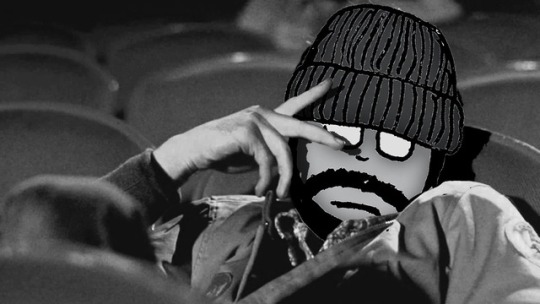
WATCHING MOVIES
Chief Doomsday, in his rare free time, likes to attend theaters and take in the wonderful world of cinema. If you ever want to know what he thinks about movies, check out DOOMonFILM right here on tumblr.
0 notes
Text
Thoughts : The Worst Person in the World (2021)
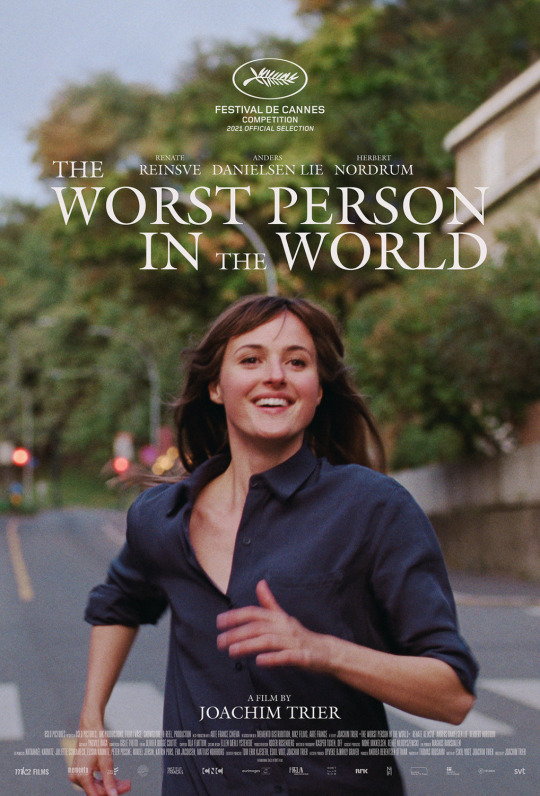
Love, more than likely due to its volatile and explosive nature, has been a staple of film since its inception. From The May Irwin Kiss of 1896 right down to 2022′s Three Thousand Years of Longing, you can bet that each passing year, generational and cultural shift brings with it scores of new cinematic perspectives on nature’s intoxicating drug. As an artist, I’ve even found myself personally enamored with the subject... back in 2013, on a song called practicing to come undone, I found myself vocalizing the line ‘trail of destruction in the wake of seduction’. At the time, I had a clear idea what that line was in reference to, and what it meant to me on the whole, but never would I ever have thought that nearly ten years down the road, a movie would embody this thought in a truly elegant manner. After a year of waiting, and thanks to the streaming services Mubi and Hulu, I finally made the connection in the form of seeing The Worst Person in the World.
youtube
Flights of fancy and whimsy are easily identifiable characteristics of young folks, and Julie exudes these qualities in spades, with the prologue of the film solely dedicated to explaining to us how Julie is equal parts passionate about any given stimulus and wholly able to disconnect from said passion as she dives all in to a new one. This seeming lack of impulse control, not to mention a deeply self-centered and self-serving view of romance, education and the world in general, become foundational characteristics for Julie and our journey with her. In turn, the journey sets itself up to be a cautionary tale, with Julie’s signature fast-tracked intimacy (in all of its ugly beauty), her ability to fall in and out of love like bungee jumping, and her extremely toxic habit of pushing men out of their comfort zone as a personal connection mechanism all standing as clear indicators of Julie’s confounding ability to be as bad a person as she is an attractive one with a beautiful spirit. Her cycle of dealing with men is given plenty of examination, be it with her wanting what she can’t (and shouldn’t) have with Aksel, seeking an excuse for disconnection via Eivind, or the way she reverts to a submissive child in the presence of her father.
The 12-chapter presentation, complete with prologue and epilogue, is a wonderful narrative device, especially in the way that Joachim Trier empliments it throughout The Worst Person in the World. Initially, I assumed that the 12-chapter layout was a clever way of masking some sort of 12-step approach to personal redemption, but in actuality, it stands more so as clear-cut dividers for the many visual, tonal and emotional shifts we are presented with. Julie stands as a symbol of youthful idealism in the face of world-weary experience, and while she does not let this opposition break her spirit, it certainly shapes her outlook and perspective, though the ending puts much of this growth into question. Julie also presents us with a refreshing look at sexual enlightenment and balancing... while she does represent a fiercely feminist stance in the face of the patriarchy and societal norms, her path is not romanticized or absent of turmoil and self-induced stress. I really enjoyed Julie’s outlook, problematic nature and all, as it often forced me to take a moment and examine my reaction to her stances... her infatuation with men at ‘half-mast’ made me wonder about the roots and expectations of her power fantasies, while her awareness of her generational and general womanhood lineage did let me know that there was intention in her actions, even if it is questionable at best. Ironically, or perhaps cleverly, the most interesting moment (and seeming thesis statement of the entire film) came via Aksel and a contentious interview he partook in, particularly in the way that we momentarily stand firmly in the position of Julie rather than beside her.
For all of the work and effort that goes into The Worst Person in the World‘s narrative and character work, one should not overlook the stunning technical achievements of Joachim Trier and company. The non-linear storytelling works well because, while not chronological in terms of time, it is very much logically chronological, with information and experiences presented at just the right points in the narrative to make you second guess and reassess your initial assumptions of any given situation. Both the cinematography and music cues (scoring and soundtrack) work together to take the viewer on a rollercoaster of subliminal emotions, starting with such portrait-esque, naturally lit joy that it puts the viewer in a perfect position to take the multiple aesthetic destination-filled plunge. There are plenty of instances where physical distance and various barriers serve as simple but palatable symbols of rising conflict, immediately clueing viewers in to Julie’s feelings towards Aksel and Eivind. Comparitively, sequences like the citywide freeze and the drug trip clue us in directly to Julie’s deeper desires, emotions and trauma, while also bolstering and catapulting Julie into her numerous life-altering decisions. As we reach the final chapters, the sudden narration that appears works as a disassociate element that symbolizes the way Julie attempts to distance herself from the responsibility and consequences of her romantic choices.
Renate Reinsve brings her everything to the role of Julie, serving as a lustful and reckless fly in the romantic ointment, reveling in all the drama and fallout of her actions like a 5-D chess player. Her ability to push emotions like osmosis onto the viewer is powerful, which makes the casual contrarian nature of her Julie portrayal so much more visceral and confounding as we take the journey of awareness with her. As for her romantic foils, Anders Danielsen’s Aksel is the perfect initial yang to the yin of Julie, with his calm, thoughtful and sweet nature offsetting her emotional recklessness, which in turn forces him to display a cautious but honest shield in order to defend himself from her onslaught. In contrast, Herbert Nordrum plays Eivind as a timid loner who is clearly full of longing and internal turmoil and trying his best not to fall to Julie’s temptation, with his journey to enlightenment lining up perfectly with Julie’s blind cannonballing towards her own skewed version of personal awareness. As for parental influence, Marianne Krogh and Vidar Sandem make a perfectly bittersweet tandem tug of war for Julie, with Krogh’s passive affirmations enabling Reinsve’s Julie choices, and Sandem’s passive aggressiveness forcing Julie to acquiesce and tuck her power in. Supporting appearances by Marina Grazia Di Meo, Sofia Schandy Bloch, Gisle Tveito, Hans Olav Brenner, Anna Dworak and numerous others bring various textures of sensitivity and tension to The Worst Person in the World.
Perhaps the best aspect of The Worst Person in the World is its ability to provide viewers with a fair and honest look at lonely people and the way they navigate amongst one another without having to sacrifice the joy and heightened experience that comes with cinema. In many ways, the film feels like a spiritual successor to Un femme est un femme that still manages to reach the uncomfortable and traumatizing lows of a film like Scenes from a Marriage without feeling like an entirely new experience. If nothing else, I can thank The Worst Person in the World for introducing the term “intellectual Viagra” to my lexicon. If you’re looking for an engaging movie about a terribly dysfunctional person, look no further than this Joachim Trier homerun of a movie.
#ChiefDoomsday#DOOMonFILM#JoachimTrier#TheWorstPersonInTheWorld#RenateReinsve#AndersDaneilsen#HerbertNordrum#HansOlavBrenner#HeleneBjørneby#VidarSandem#MariaGraziaDiMeo#LasseGretland#KarenRøiseKielland#MarianneKrogh#TheaStabell#DenizKaya#EiaSkjønsberg
1 note
·
View note
Text
Review : tick, tick... BOOM! (2021)

Somehow, this past week has found my film world consumed by the presence of Andrew Garfield. It all started when I invited a friend over for a movie night, and out of the thousands of options available, we landed on Under the Silver Lake. Cut to my normal rotation of YouTube viewing over the next few days where Vee Infuso, the Corridor Crew, Elvis The Alien and Trin Lovell (among possibly many many more) all did takes urging viewers to reconsider their stances on the two Amazing Spider-Man films, famously anchored by Garfield in the titular role. All of this would have been enough, but as many of you know, I’m deep in the midst of making sure my 2021 film slate is covered, so naturally, the next film in the queue turned out to be tick, tick... BOOM!, a highly stylized retelling of the Jonathan Larson story, particularly his breakthrough rock monologue that shares the film title and set up the runaway success of Rent.
youtube
If 8 1/2 is on one end of the self-referential, inward fourth wall breaking cinema spectrum, and Adaptation is on the other, then I would say that tick, tick... BOOM! serves as a music-filled median. The film has self-awareness built into its mix, with actual friends and footage from the Jonathan Larson circle intertwined with identical remake footage featuring Andrew Garfield right from the jump, and with this immersion and integration going wheels up immediately, the illustration of how frustrating and spirit breaking the journey of life-altering inspiration can be is given extra lift due to the presentation style. The all-to-familiar struggle of the starving artist serves as the engine for tension, with that presence literally becoming personified by a ticking clock that is both a symbolic and on the nose motif, particularly with those familiar of just how brief Larson’s window of success was due to his untimely passing. Like Rent, tick, tick... BOOM! is a modern presentation of the traditional musical with narrative threads that focus on the perils of romance, writer’s block, personal responsibility and financial responsibility, but unlike Rent, which is meant to appeal to a wide range of people with similar experiences, this story travels outward from deep within the wells of Jonathan Larson’s memory and legacy.
With the current vanguard of music theater Lin-Manuel Miranda in the director’s chair, it’s no surprise that the edgy (in the most positive aspects of the definition) and visceral work of Jonathan Larson is given a bold translation on the screen. tick, tick... BOOM! contains a collection of some of the most standout film songs I’ve seen in years, with a long list of standout material... 30/90, the super catchy earworm Boho Days, Johnny Can’t Decide, the star-studded and subtle Sunday, the painfully beautiful Therapy, the show-stopping Come To Your Senses, Real Life and Louder Than Words all occupy space and time in the mind long after the final credit has rolled on the film. Miranda handles tempo and pacing of all elements well, allowing the pendulum to swing freely between dramatic and musical passages, and spending the most time within that middle ground were the elements are braided together. As a result of allowing these dramatic and music elements to dance with one another without putting limits on their interaction, we are shown many levels and shades of the human interaction, all on a playing field that is bound by joy, humor, depression and frustration.
Cinematography-wise, the camerawork stays deeply intimate and in the face of all parties involved, giving viewers the feeling of living in and sharing spaces with the Bohemian crowd that Larson and company symbolized, which in turn makes our emotional reactions resonate deeper during the on-screen journey. Much of the film is draped in a 1970s-styled and influenced take on the eve of the 1990s, with different flashes of hopefully and colorful brilliance breaking up the heaviness of the created world. As mentioned several times prior, there are a menagerie of presentation styles, up to, including but not limited to dramatic swings between old school and modern musicals, reality television (which this project pre-dated in real life), testimonial theater, biopics and so much more. You can feel the respect, admiration and love for Jonathan Larson in the way that Lin-Manuel Miranda directs, not to mention the same respect, admiration and love for the greater New York theatrical community that allowed Miranda to rise to prominence. The sound design and editing keep the energy going at a very freeing level, even when we are up to our eyeballs in deeply relatable tension. Perhaps the most interesting thing about the film is the fact that it is a period picture that doesn’t necessarily announce itself as such, with elements of AIDS, capitalism, the moral majority and their attempts at iron-fist fundamentalist rule, cultural shifts and more all serving as supporting elements for the deeply personal tale.
Andrew Garfield swings for the fences in his portrayal of Jonathan Larson, embracing every aspect of life fulfillment and inspiration chasing that he can while exuding the frustration of chasing the inspiration dragon and trying to balance some semblance of a fruitful relationship and personal responsibilities, and all in the name of producing forward-thinking and joy inducing work... don’t be surprised if you see Garfield pop up in the Best Actor nominations. Alexandra Shipp (who, as an aside, bears a striking resemblance to Robin Givens at times) plays the romantic foil with the confidence of a deeply focused woman longing for a grand display to shake her world up, all the while exuding shades of unconditional and tough love. Robin de Jesús shines in his role, managing to keep up with the high bar set by Garfield via an ability to swing between a Bohemian free spirit and a man forced to buy in to the American dream with equal ease, making his story arc one of the more powerful in the film. Joshua Henry and Vanessa Hudgens both have small dramatic moments where they make the most of the opportunity, but both really come through in the clutch during the performance scenes of the in-film tick, tick... BOOM! show that ties the film together. Jonathan Marc Sherman and Judith Light embody “stereotypical” aspects of the New York theatrical experience without succumbing to the full-scale caricature realm, while Bradley Whitford really shines in his portrayal of Stephen Sondheim (who himself makes a vocal cameo in the film). The cast of tick, tick... BOOM! is massive, but other standout appearances include Mj Rodriguez, Ben Levi Ross and the rest of the diner crew, the living legend Tariq Trotter, a couple of hilarious Jelani Alladin moments and, as previously mentioned, a literal who’s who of the New York theatrical royalty in the Sunday number.
Lin-Manuel Miranda ought to be happy this upcoming February, as he will more than likely find himself in competition with himself for songs from In The Heights and tick, tick... BOOM!, putting him in the rare air that has lately been occupied solely by the likes of Trent Reznor and Atticus Ross. It also makes sense to my why Andrew Garfield has been so adamant about not being a part of the insanity that has been the run up to Spider-Man: No Way Home, as the daunting shadow that surrounds most any Marvel release would draw away from his stellar work in tick, tick... BOOM!, specifically his incredibly touching portrayal of the iconic Jonathan Larson. All in all, this might be one of the strongest efforts put forth by Netflix as a production studio, and in a year where the musical is clawing its way back into cultural relevancy, this is a bright shining star in a galaxy finding its light.
#ChiefDoomsday#DOOMonFILM#JonathanLarson#LinManuelMiranda#ticktickBOOM#AndrewGarfield#AlexandraShipp#RobindeJesús#JoshuaHenry#VanessaHudgens#JonathanMarcSherman#MjRodriguez#BenLeviRoss#JudithLight#BradleyWhitford#LauraBenanti#DanielleFerland#MicaelaDiamond#UtkarshAmbudkar#GizelJimenez#KateRockwell#AneesaFolds#JoelPerez#JudyKuhn#DannyBurstein#LaurenMarcus#RichardKind#TariqTrotter#RyanVasquez#JoannaPAdler
9 notes
·
View notes
Text
Review : Finch (2021)

I can’t lie... of the three main streaming services with aspirations of sharing space with the major Hollywood studios (those three being Netflix, Amazon Prime and Apple TV), I’ve been most consistently impressed by the feature film output from the Apple TV camp. While they may be far behind in terms of quantity, the quality found in the handful of feature-length releases is impossible to ignore. The level of star power connected to Apple TV is another factor that cannot be ignored, and it’d be harder to name a bigger star from the past 40 years or so than the nearly universally loved Tom Hanks. I still have yet to circle back around to Greyhound, but from the moment I heard about Finch it was on my must-see list.
youtube
While Finch is definitely its own creature, I can’t help but see it in terms of a particular Venn diagram : one circle containing the Frankenstein story, and a second overlapping circle containing the Short Circuit films and CHAPPiE. The Frankenstein side of things covers the elements of the film focusing on an inventor and his creation, the struggle to impart humanity on said creation, and the frustrations of being a man taking on a seemingly God-like role. In terms of the Short Circuit and CHAPPiE side of things, those comparisons should be obvious, as Finch‘s Jeff continues the lineage of re-skinning the Pinocchio story into the tale of a childlike android. By adding the dual narrative threads of post-apocalyptic living and a “man’s best friend” situation, a sense of urgency is implanted that is not dependent on a military or corporate presence, and the personalization of this experience turns the experience into one that truly mirrors a parent-child educational dynamic. Through these two threads, we are also given insight into the human connectivity with other organic beings (for lack of a better word), as we see how opposite Finch’s relationship to Goodyear is in comparison to his relationship with Jeff, to the point of one being unconditional love and the other being a master/servant dynamic.
Another positive on this post-apocalyptic tale is the way that danger, while being ever present, is left to be an auxiliary aspect of the narrative rather than one that is key to story progression. Through Tom Hanks’ characterization of Finch, we immediately more than understand just how dangerous the world we are placed in can be, with the only other human presence in the film ultimately ending up being a tragic flashback. As such, we are not forced to watch Finch survive off of his strength and wit (which we’ve seen many many times... go watch I Am Legend for that), but instead, we get a rare glimpse of someone trying to keep their heart and humanity in the face of guaranteed despair. Through the presence of Jeff, Finch is forced to try and explain the abstractions that make up the human experience, leading us as viewers to reflect on our own experience in our crazy pre-apocalyptic world.
Most of these streaming services are known for keeping the financial aspects of their films tightly guarded, but however much money it took to make Finch, it looks and feels like every penny of it is accountable for what the final product looks and feels like. The visual effects work used to bring Jeff to life is so strong, in my opinion, that I often found myself forgetting that I was watching a very talented Caleb Landry Jones more than likely doing a digital composite performance, as Jeff looks so real in terms of both his appearance and interaction with the world around him that he may as well have been an actual android. The locations have a pitch-perfect post-apocalypse look to them, and the sense of danger and despair is amplified by the visual effects work used to bring the storms to life that hound Finch and company. There are some wonderful soundtrack choices of well-known selections across a large span of genres, and the vast majority of the songs manage to inform us of subtext within the narrative without coming off as obvious or ham-handed. While costuming was likely far from the main focus on the production side, the UV suit that Finch dons through a large portion of the film has a wonderful look to it, especially in terms of how used it looks, and the jacket with the fur-lined hoodie that Jeff wears at times makes him prime for some fan art.
This cast is literally carried by three living beings, two of which are human, and only one who appears on-screen in human form, making this film feel like a sweet and personal song playing in the midst of a vastly chaotic post-apocalyptic mixtape. Leading the charge is the man everyone came to see, the living legend that is Tom Hanks, who shows a wonderful range of unconditional love, fatherly frustration, a dire sense of urgency and a pure protective nature, making him the wonderfully relatable human presence we know Hanks to be, and the unquestionable heart of this very heartfelt film. On the other side of the coin is the always talented rising star Caleb Landry Jones, who despite being in his early 30s is able to bring a wondrous child-like nature and innocence to his portrayal of Jeff, as he puts elements of curiosity, admiration, aspirational growth and, perhaps most importantly of all, confusion, into a role that most will probably remember for his extremely kinetic physicality. Rounding out the main cast is Seamus, the scruffy Terrier that sticks to Finch’s side like glue with his seemingly natural and innate ability to emote and show tendencies of trust or distrust, depending on the particular situation.
Finch will almost certainly be nominated for Best Visual Effects at the next Academy Awards ceremony, and based on what I’ve seen so far this year, I wouldn’t be surprised if it pulls off a win. I don’t know if Tom Hanks and Caleb Landry Jones will be recognized for their performances to the point of nominations, and I doubt any science-fiction film not directed by Christopher Nolan will see a nomination for quite a while, but I definitely expect to see Finch on a few year-end best of lists. For those with access to Apple TV, give it a chance, as it is definitely a continuation of the high quality programming coming from that realm of the world wide web.
7 notes
·
View notes
Text
Ranking : Gus Van Sant (1952-present)
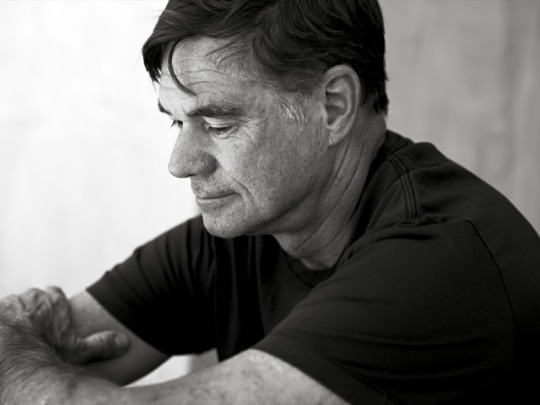
I was somewhat familiar with Gus Van Sant prior into taking the deep dive through his catalog, but he was certainly a man that I thought I had a handle on. I knew he had more than a few amazing films under his belt, but the recent years had not been kind to him (see the shot taken at him in Jay and Silent Bob Strike Back). I knew that he was from the Pacific Northwest (Oregon specifically), and his coming of age in an area that embraces weirdos and outsiders had an impact on him as a human and as a creator. I knew that films like Milk and Good Will Hunting had taken Van Sant to the highest heights, while the collective panning of films like Psycho and Last Days served as valleys in a career full of glorious peaks.
What I came to discover, however, was a man with genuine creative integrity, and lots of it. I found a director who understood his characters and actors on a human level, and shared them with viewers in ways that helped rich connections develop. I saw a director who was not afraid to make those that society often considers outcasts the emotionally rich and important centers of his narratives. I watched Gus Van Sant present, explore, develop and refine his style over deeply independent and infamously studio-driven projects, giving all experiences as much care and attention as he was able. I saw films I was familiar with find placement behind films I was new to, I discovered that his recent creative years have not been as kind to him as the first two-thirds of his career, and I can see that there still may be a bit of a smolder left in his creative fire.
Ranking directors is a labor of love, but by no means do I consider myself the definitive professional on film canon. I enjoyed all of the Gus Van Sant films I watched on some level, and as always, for those brave enough to interact, I’d be curious to see where you would make adjustments to the list. But enough introduction talk, let’s get into what you folks came for!


17. Restless (2011)
There are things about Restless that I want to love without judgement. First and foremost, Mia Wasikowska is an absolute treasure who shines in this performance from the earlier portion of her career. The portrayal of Hiroshi is one of the more subtle, substanced and interesting ways of using a ghost within the film framework. As minor a thing as it may be to the casual moviegoer, some of this film’s technical aspects are astounding, specifically the costuming and the lighting choices. Where the film distracts me, and therefore drops in these rankings, is where it takes the YA approach to the romantic drama, with a healthy dose of manic pixie dream girl energy thrown in for good measure. When it comes to displaying romance on-screen, be it teenage or otherwise, there are no expectations, even for a director with a distinct style. Where my issues arise are in the way that death is handled in this film… while I do understand that not every film has to be a distinct statement for a director (especially a film written by another individual), Gus Van Sant had already established a very mature approach to the subject of death, and the way that death and the manic pixie dream girl aspects are intertwined feels more on the amateur side than I am comfortable with for a Gus Van Sant film. Maybe giving the impossibly troubled young man a muse with an expiration date as his way to find the best version of himself is a stroke of genius that provides a gateway for deep commentary on the concept of the manic pixie dream girl, but the film is so approachable and not the type to bare teeth (be it satirically or otherwise) that I doubt there is any subtext to its intention. For that reason, this film finds itself on the bottom half of the Van Sant canon.


16. Don't Worry, He Won't Get Far on Foot (2018)
After the critical and box office disappointment that was The Sea of Trees, director Gus Van Sant had quite the hill to climb with his next film, and with his adaptation of Don’t Worry, He Won’t Get Far on Foot, it seemed he was able to right those respective ships. Strangely, the film failed to connect with me, and as far as I can tell, it seems to be the victim of an “all sizzle, no steak” scenario. The film is certainly a showcase of a very diverse cast, and based on both the flashback-based and group therapy approach to the story, there are a wealth of opportunities to create memorable moments. Unfortunately, and perhaps due to an oversight on my end, I failed to find enough substance during my viewing of the film to prop up the parade of moments. What it felt like I was left with, sadly, was a Simple Jack-level approach to conveying a paraplegic-centered story, which undercut the fact that the film is actually telling the true story of cartoonist, artist and musician John Callahan. That’s not to say that the film doesn’t have it’s positive aspects, such as the John Callahan illustrations and the animated versions of his work, but those positive aspects feel sparse in comparison to how much the film relishes in what feels like Oscar bait. If nothing else, see this film for Jonah Hill, because it took me much longer than it should have to recognize him, partly due to his impressive weight loss and partly due to how dedicated he is to achieving the film’s period look.


15. The Sea of Trees (2015)
Death is no stranger in the films of Gus Van Sant, but I don’t feel that it would be bold to state The Sea of Trees deals with death in the most direct manner. For those that subscribe to grief having stages, this film accounts for all of them in some way, shape or form during the course of the narrative as we watch Arthur Brennan fall apart and rediscover himself in the wake of losing Joan Brennan, his wife. Placing the film in Aokigahara (aka the "Japanese suicide forest") not only gives the film a sense of natural beauty, but a foreboding sense of dread and despair as well. The core cast is as strong as any found in a Van Sant film, with Matthew McConaughey, Ken Watanabe and Naomi Watts all turning in solid performances. Sadly, the film falters in one very core aspect : sympathy for the protagonist. I found myself feeling very bad for Joan Brennan as I watched her arc, and despite knowing nothing about Watanabe’s character portrayal of Takumi Nakamura, I found myself sympathetic to him based solely on what he was emoting. Arthur Brennan, however, is interesting in all the wrong ways… he is extremely cold and purposefully flat when introduced, the moments we share with the Brennans only seem to show Arthur finding joy at the expense of Joan’s pride, his view of the loss of his wife (and his world view in general) seem to be extremely self-centered, and when he does show heroic attributes they are rooted solely in self-preservation. Perhaps if Van Sant had not already made such eloquent reflections on death via The Death Trilogy and Paranoid Park, The Sea of Trees could have been seen in a different light, but when you set such a high bar for your work, returning to stereotypical storytelling can feel flat and uninspired.

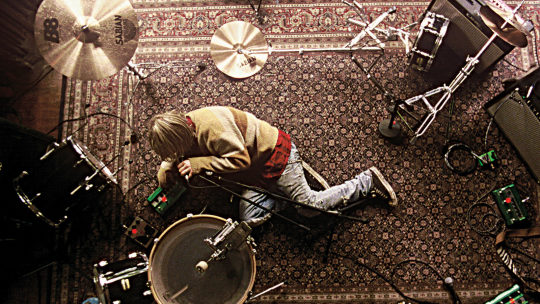
14. Last Days (2005)
Last Days is a film with a weird energy and aura surrounding it… in some ways, it feels like the most performative film not only of the Death Trilogy, but out of the entire Gus Van Sant catalog. At the risk of using too negative an adjective, it also feels the most exploitive, though neither of these observations are necessarily meant to be a knock against the film. The Death Trilogy could not help but be exploitive at its root, as each film was inspired by an infamous death event, and with Michael Pitt’s Blake meant to be an avatar for Kurt Cobain, it would be simple to take the film at face value for some sort of glamourized and idealized fictional retelling of his tragic final moments, not to mention a few stylistic nods to iconic Cobain-related imagery. What that viewer would be missing, in my opinion, is a film looking to make some familiar points on outsider culture (specifically alternative rock and roll counterculture and addict culture) minus all the glamour and shine. While Blake’s house is grand, it’s decrepit and in a state of disrepair… despite it being isolated, expected and unexpected guests arrive constantly, not to mention an intrusive ringing phone that connects Blake to outworld obligations… Blake has a number of people living with him, but he almost never interacts with them. Michael Pitt is done up to look so similar to Kurt Cobain that much of the narrative background is implied, and what we are left with is the Death Trilogy style implemented and fused onto a loose leaf narrative with just enough structure to let the supporting actors have isolated memorable moments while we watch Pitt’s Blake decay in the ways that many of us Cobain fans ruminated on in the wake of his sudden and tragic death at the height of his tortured popularity.


13. Gerry (2002)
At the risk of sounding cliché, Gerry may be the most fascinating film in Gus Van Sant’s canon. It marks a clear and definitive break in convention from a director that seemingly never cared too much for convention anyway. Multiple aspects of this film make it extremely unique : both characters referring to one another by the same name (though Gerry eventually evolves into an all-purpose non-specific descriptor), a seemingly absent narrative, a shared goal between the characters literally referred to as “the thing” in order to purposely keep viewers in the dark and, perhaps most importantly, a deliberately methodical pacing that pushes even seasoned film lovers to the limits of their patience. The film is beautiful, and that is a fact that cannot be denied… the painterly shot compositions of our characters in the isolated desert, the unfathomably long tracking shots that pull us deeper off the beaten path and the sonic stillness (due to a largely absent score that is replaced with the sounds of nature) either commit you fully to the experiment or come off as massively pretentious. To view the film through that secondary lens, however, is to miss the point of it all. Once it is understood that Gerry marked the entry point for Gus Van Sant’s Death Trilogy, you began to realize that Van Sant, in tandem with Matt Damon and Casey Affleck, are giving us an understanding of how we should view the trilogy, and how open-minded we should be in processing what is given to us, like some early high-concept version of what Quentin Dupieux would later go on to master in a more abstract manner.


12. Mala Noche (1985)
It’s fitting that this was a feature-length debut from a driven and working director, as it has a very distinct look and feel to it that immediately lets you know you’re dealing with an innate storyteller and someone who has spent time observing the human condition. In terms of visual and narrative balance, Gus Van Sant utilizes what feels like a mix of John Cassavetes and Jack Kerouac, respectively. Van Sant’s use of titles in the film is striking, specifically in terms of the handwritten opening credits and the Dr. Pepper ad copy used to subtitle the Spanish language dialogue. Focusing so heavily on immigration and homosexuality in 1985 is a bold choice, especially as neither group had yet to benefit (even if only minimally) from the onset of politically correct culture policing. While the film was more than likely shot in black and white due to budgetary constraints, the infusion of somewhat modern elements (for the time) gives it a youthful and forward-thinking energy. Having a film of this nature lean so heavily on multilingual and multicultural elements is refreshing, and even more impactful when examined under the boorish and (at times) tone deaf application that humanizes these elements. For all of these aspects of the film, however, when examined at the pure narrative foundation, what we find is a story about how love can blind us from the reality we inhabit, and how we often choose to ignore the obvious when romance and romanticism enters the picture.


11. Psycho (1998)
Of all the films in the Van Sant catalog, perhaps the bravest, boldest and most baffling entry is his nearly shot for shot remake of the iconic Alfred Hitchcock thriller and cinematic game changer Psycho. Remakes were certainly not a new or unheard of practice at the time of the Van Sant Psycho release, but most directors opt to put significant twists or updates into their retelling of most remakes, and most films chosen do not hold the lofty stature and position that Psycho does when it comes to remakes. Van Sant’s approach not only made viewers keenly aware of just how direct the homage was, but in some places, modern touches were added in very subtle ways to make the movie more palatable for modern audiences, including more salacious references to sexuality, sound design choices in both the diegetic and symbolic realm, and even an update or two to iconic scenes meant to make us much more uneasy with the Vince Vaughn portrayal of Norman Bates. The actors cast were all famous and respected enough to keep the film’s timeless feeling in-tact, even if the remake could be taken as its own weird and warped project. Personally, I’ve always loved this remake, and taken it as an experiment on the highest commercial level, and a signal to all that Van Sant (at the time) was done with the traditional approach to filmmaking and concepting.

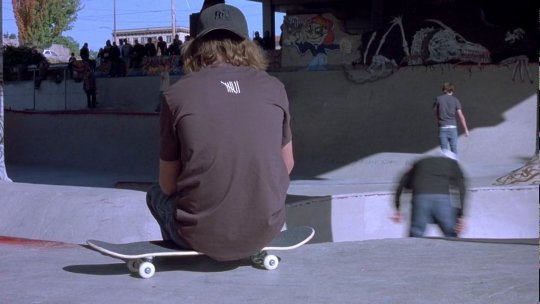
10. Paranoid Park (2007)
While many movies centered around skateboarding spend their time and design budget trying to make the outsider nature of the practice look “cool”, Paranoid Park spends its time making sure that the isolation, deep focus and rebellious attitude that come with skateboarding were more authentic than they were appealing. High school is already a very taxing and polarizing section of juvenile development, and based on your perception at the time, the weight that the world unloads on you can feel wholly unbearable. Perhaps this is what makes Paranoid Park such a tense film… that natural teenage angst is already imprinted into the film (and amplified due to the casting of relative unknowns), but Gus Van Sant’s signature use of alternative film stocks, obscure soundtrack and expressive, layered sound design but you square in Alex’s head from the opening moments. As the narrative unfolds, we realize that Alex is not only dealing with standard-issue teen stress, but has unwillingly found himself involved in the type of events that change an individual’s world. This film plays well as the first film post-Death Trilogy, as it deals with the gravity of mortality head-on much like the aforementioned three films, but does so from an adaptive stance rather than one based on true events. If you’re a fan of skater flicks, movies with strong teen acting, or little-known Gus Van Sant gems, then Paranoid Park is a gem waiting for discovery.

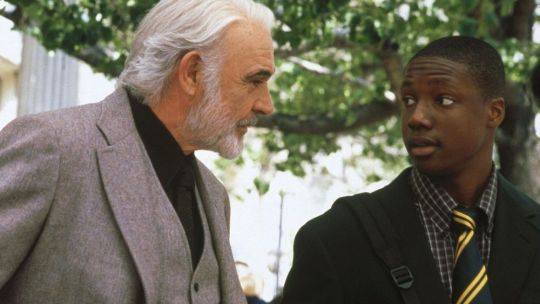
9. Finding Forrester (2000)
Gus Van Sant has always had a way with stories that dive below the surface of the human experience and condition, so it makes sense that his attempt at a New York-based movie about people living in “the hood” would cover an array of topics with masterful subtlety, specifically the topics of race relations, generational gaps and the blurry line between education and exploitation. The casting on this film is extremely strong… then newcomer Rob Brown gives a riveting and dynamic lead performance, it’d be harder to cast a more perfect curmudgeon than Sean Connery, and appearances by F. Murray Abraham, Anna Paquin, Busta Rhymes and a Matt Damon cameo all stand out. Speaking of Damon, Finding Forrester shares a similar energy to Good Will Hunting, but the proximity of release ultimately held Finding Forrester from finding its proper audience (no pun intended). I wish I had more to say about this film outside of my personal feelings and connections to the story (which I will save for a dedicated deep dive in the future), but Finding Forrester is one of those films that has no trouble speaking for itself.

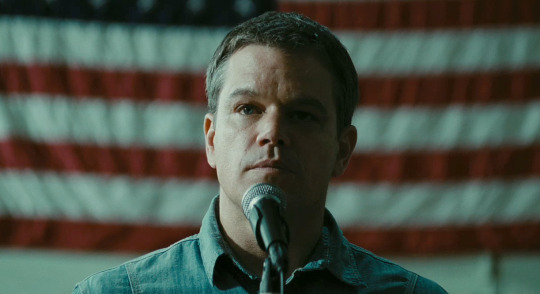
8. Promised Land (2012)
As of the point that this blog post was created, this film stands as the last of the great Van Sant creations. There is something about the Gus Van Sant approach to filmmaking that works best with “salt of the Earth” types, and with Promised Land being centered around the practice of fracking, much of that down-home nature is immediately baked into the story. Speaking of the story, the film was co-written by the characters who ended up being the protagonist and antagonist of the picture, respectfully, which created an electric main dynamic that served as the spine for many other strong dynamics present in the film. In terms of the cinematography, much of Van Sant’s bold approaches and stylistic shifts are absent, save for a few beautiful bird’s eye view perspective shots that give you a real idea of what rural America looks like. Van Sant is no stranger to stacked casts, but he gets some truly top notch names to take part in this affair, and true to the clout behind these names, the performances are as stellar as they are believable and natural. The film also touched a nerve with the actual oil industry due to some of its comments on fracking, despite it not having the reach or success of other Van Sant films. While possibly an indicator that Van Sant would be making a stylistic shift, Promised Land still manages to capture what makes Van Sant his best self in terms of not only presenting real people, but topical and important situations.


7. Milk (2008)
Gus Van Sant is clearly no stranger to having representation for the gay community in his films, so it makes sense that one of the hallmark films in his canon would center around gay rights activist and politician Harvey Milk. Much like JFK crystalized Oliver Stone, or Spike Lee was raised to another echelon by Malcolm X, Van Sant found a second round of Academy Award-level validation via this biopic while solidifying himself as a creative who could go back and forth effortlessly between big budget studio films and independent projects. With Sean Penn giving one of his signature chameleon-like performances and leading the pack, this Van Sant production is filled with tons of burgeoning talent who have since gone on to make names for themselves in the industry, including the likes of Emile Hirsch, Diego Luna, James Franco, Alison Pill and others, plus a standout performance from Josh Brolin (who also depicted George W. Bush in the same year for the aforementioned Stone). While it may not be the most technically marveling film of Van Sant’s career, it is clearly one of his most important, and the way that it handles the messages it intends to share is as confident as it is even-keeled, which is important for a film that could have easily become a soapbox for espousing personal beliefs and political agendas.

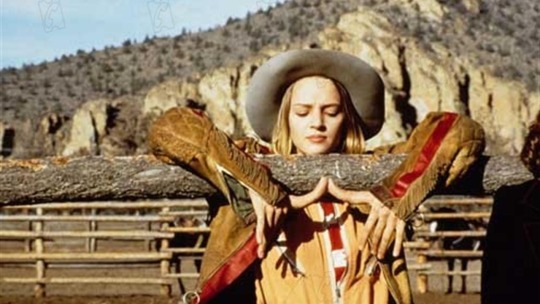
6. Even Cowgirls Get the Blues (1993)
This Gus Van Sant adaptation of the famed author Tom Robbins novel shares the same creative energy of films like Fear and Loathing in Las Vegas, Natural Born Killers, Harold and Maude and so on in the sense that it is a very expressive film with a very specific idea it is looking to present. Where the aforementioned films explored ideas of free love taken to the extreme, the toxicity of media, love without judgement and so on (respectively), Even Cowgirls Get the Blues puts femininity and identity outside of the male gaze squarely in its crosshairs. Uma Thurman takes on the role of Sissy with wide-eyed zeal, floating through a series of hitchhiker-based adventures until her reluctant visit to the Rubber Road Ranch helps her find the missing piece of her puzzle. Seeing a bizarre, star-studded tale of a woman finding her agency sounds like it would work on the surface, but from what I could find, the film failed to make a connection with audiences and is considered a commercial and critical failure (which is probably why it was the toughest film to track down on this list). That being said, I’m a sucker for films that catch a bad rap, especially when the combination of such a unique director and visionary author are the foundation of it, because it makes me curious about why I find connection where others did not… who knows, maybe it was those extremely distracting rubber thumbs (the only real knock I can make on the film), or maybe the Tom Robbins style is tough to transfer from page to screen, but for my money’s worth, I can see the vision.

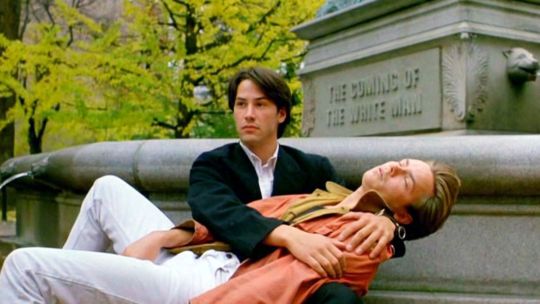
5. My Own Private Idaho (1991)
Somewhere within the intersection of films like Midnight Cowboy and Fight Club lies My Own Private Idaho, an extremely personal and nuanced film that covers many topics with depth and an ease that comes with wisdom and experience. For example, when it comes to views on identity, we get two rich narratives that could easily both be their own film : Mike (portrayed by River Phoenix) is going through a crisis of identity based on a sordid history with his mother and absentee father that makes his search for love transform into a life of hustling as a way to find momentary intimacy; meanwhile, Keanu Reeves (who plays Scott) is an entitled young man awaiting an inheritance that decides to spend the time until it happens “slumming” with those many would consider the outcasts of society, much like the “tourists” spoken of by Edward Norton’s narrator in Fight Club. The struggle with masculinity in the face of homosexuality is all over this film, from its multiple male on male connections to the very toxic manner that the core group interacts with one another, when they are not grieving or putting their livelihood in danger via petty crimes. In terms of Van Sant style, the film is one of his most innovative (outside of the film holding the top spot) in terms of looks, with its unique range of colorful title cards, the pinhole vision that Mike uses on his road, or even the standout magazine rack sequence. The film is also a perfect follow-up to Drugstore Cowboy, and could easily double feature with it to this day. As someone not wholly familiar with Shakespeare’s Henry plays, I did not catch that My Own Private Idaho was an adaptation, so I will not only have to revisit it with that familiarity in tow, but I will have to take a look into James Franco’s re-cut, My Own Private River, as well.

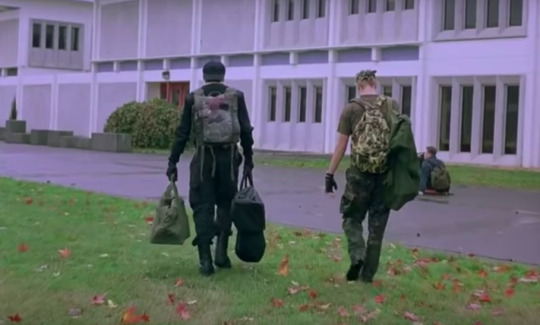
4. Elephant (2003)
Based solely on the nature and definition of a trilogy, a second film can make or break things. Gerry and Last Days share similarities in how quiet and isolated they are, so it makes sense that Elephant, part two of Van Sant’s Death Trilogy, would in many ways be the meat of the trilogy sandwich in terms of style and thematic substance. Elephant operates on several distinct levels based on Van Sant’s observations of the world going into the new millennium, as the film allowed him a foundation for both experimentation and examination by proxy. While the long takes and vast amount of distance traveled during said takes was present in all three films of the trilogy, Van Sant made a concentrated effort to make the shots look and feel similar to that of video games like the later Grand Theft Auto entries, hence a number of the shots being positionally locked during travel (often times a few feet behind the character at the center of that moment’s focus). There are ramp-downs of the frame rate to punctuate certain moments, and quite often the camera is thrown on a tripod and allowed to take in the array of high schoolers living their standard life. It is this mundane world-building aspect that not only gives the viewer a rapid but deep look into a handful of character’s lives, but it gives you a sense of the school’s social hierarchy while forcing you to reflect on where you once stood within it. Per the film’s clever title, the elephant in the room eventually appears in the form of Eric and Alex, the pair of school shooters meant to reflect the Columbine Massacre perpetrators. While school shootings weren’t an unknown phenomenon going into the 2000’s, Elephant became prophetic in its vision by releasing right before the numbers started rising at an alarming rate on these incidents. In that sense, Elephant holds the dual distinction of not only being one of Van Sant’s best films, but one of his most important. I will soon be looking into the 1989 Elephant film as well.

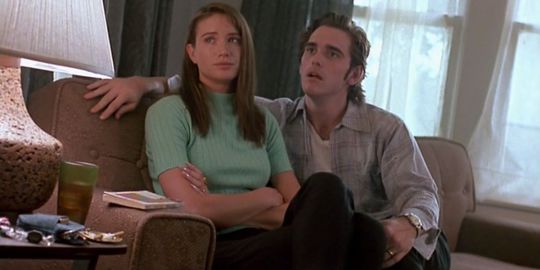
3. Drugstore Cowboy (1989)
The power of Drugstore Cowboy as a modern-day narrative tragedy about the epidemic of prescription drugs, the dark allure of crime and the oddball way that broken people find solace in one another is immediately evident to anyone who has had the pleasure to see Gus Van Sant’s studio directorial debut. Where the film really stands out however, in my opinion, is the way that Van Sant is able to achieve his major studio look while deeply applying a very artistic and personal aesthetic to the cinematography and editing. The traditional looks are interspersed with the use of different film stocks, subtle blends of animation and flashes of stylistic edits that were almost certainly an inspiration for Darren Aronofsky’s “hip-hop editing” style. Add to this an incredibly intuitive and expressive core cast driven by the chemistry between Matt Dillon and Kelly Lynch (and a very early Heather Graham supporting appearance), plus a strong appearance by the always memorable Max Perlich, a fiery James Remar performance and an iconic cameo from William S. Burroughs. The jazz-influenced score not only makes key scenes livelier, but it is a symbolic statement on the drug use depicted in the film, while simultaneously playing counter to the soundtrack choices. Period, point-blank, Drugstore Cowboy is the kind of film that surely put the world on notice, and was a clear signal of the magnificent work that would follow.

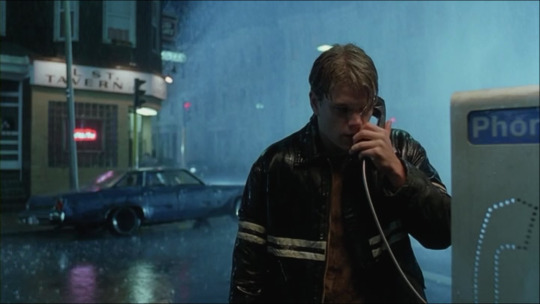
2. Good Will Hunting (1997)
If held up to the standards of what people consider to be good (or even classic) film, Good Will Hunting more than holds up to scrutiny. Visually there are a small handful of flourishes, and having Elliot Smith’s music accompany Will’s painful but enlightening journey has only become more of a bittersweet sting as the years go by. In terms of performances, everyone brought their A+ game to the table, be it the leading performances of Matt Damon, Robin Williams or Stellan Skarsgård, the supporting performances of Ben Affleck or Minnie Driver, or even the engaging nature of Cole Hauser and repeat scene stealer Casey Affleck. After a flurry of dedicated fandom viewings in the years following this film’s release, a very long period away from the film where I had leagues of personal growth, and a revisitation for this set of rankings, what I have discovered is that Good Will Hunting presents a wish fulfillment fantasy that was nearly incapable of being a reality in the pre-internet age for anyone other than a character like Will : an undiscovered genius with a degree from the school of hard knocks. In a world where people often wish they had the correct answer to every question, the looks and personality to be a social magnet, and the ability to back up any tough talk with stone hands, Will Hunting stood as an idealized example you wished you could peel off the screen and have some beers with. As the internet has invaded our lives, however, most everyone has turned into a keyboard version of Will Hunting, looking for fights online when not having briefly intimate Google sessions to flex our supposed knowledge. Much like Will, many people find that the knowledge minus the wisdom of worldly experience and vulnerability leaves you a shell of a person filled to the eyeballs with regret, and perhaps that is why this film only gets better as the years go by, and remains among the best of the Van Sant creations.


1. To Die For (1995)
For the longest time, I avoided To Die For simply because I was not a fan of Nicole Kidman… the vast majority of her roles held no interest to me prior to To Die For (it took Eyes Wide Shut for me to really start paying attention to her), and because she was so key to the film, there was never a sense of urgency about seeing it. As time went by, however, I started to hear rumblings that To Die For may have been a bit ahead of its time, to the point that technology and social practices have caught up to some of the ideas presented in the film. I finally watched it for this ranking set, and man, I really missed the boat on this one. Plain and simple, this film is pure genius on every level. The presentation starts off documentary-esque, which not only allows for expedited distribution of backstory information, but immediately gives you an idea for the personalities of our key characters. Kidman’s portrayal of Suzanne stood as the textbook example for what has become commonly known as sociopathy, with her blind desire for fame and respect leading to a wake of human destruction. In terms of narrative pacing, the film proceeds like a match dropped at the endpoint of a long gasoline trail, slowly drifting towards the eventually point that everything blows up and damage must be assessed while blame and accountability must be handled, resulting in a truly powerful ending more than deserving of the heavy lifting that precedes it. The 24-hour news cycle was on the horizon in 1995, daytime talk shows and MTv’s The Real World had not shifted into the reality TV landscape that we know today, and while a few high profile cases such as the Menendez Brothers and Pamela Smart trial (the loose inspiration for this film) had happened, the bombshell and watershed trail that was the O.J. Simpson murder case was hot on the heels of To Die For’s release (the same month, actually). Stylistically, the film also bears striking resemblance to an updated version of Sunset Boulevard, be it knowingly or not. Long story short, the best films not only comment on the times in which they are created, but gain relevance as time passes, and To Die For handled both of these things phenomenally.
#ChiefDoomsday#DOOMonFILM#GusVanSant#MalaNoche#DrugstoreCowboy#MyOwnPrivateIdaho#EvenCowgirlsGetTheBlues#ToDieFor#GoodWillHunting#Psycho#FindingForrester#Gerry#Elephant#LastDays#ParanoidPark#Milk#Restless#PromisedLand#TheSeaOfTrees#DontWorryHeWontGetFarOnFoot
22 notes
·
View notes
Text
Ranking : Andrei Tarkovsky (1932-1986)

One of the biggest breakthrough moments of my lifelong film fandom was the deep dive into The Story of Film : An Odyssey, a 2011 documentary from director Mark Cousins and the Glasgow-based Hopscotch Films. The 15-part documentary stepped outside of the realms of Hollywood (which usually finds itself as the sole participant in many documentaries that center around film), and instead, focuses on how film has been developed and evolved throughout the many other countries and cultures that participate in the medium. I was vaguely familiar with Russian filmmakers, but I’d yet to hear about Andrei Tarkovsky, so when the footage of Stalker found its way to the screen, I was as blown away as one could be from a 60-90 second clip from a 3-plus hour long film.
From there, I moved forward with seeking out a copy of Stalker, and along the way, I found copies of Solaris and Nostalghia as well. I also found a contender for favorite director, and a formidable rival to the love I’d developed for the likes of Stanley Kubrick, Federico Fellini, Ingmar Bergman, John Cassavetes and the other small handful of cinematic magicians that cast their visual spells upon the masses. The Tarkovsky bag of tools is truly awe-inspiring... at times, it seems as if he has the ability to give nature itself direction in order for it to be best captured through his lens... his camera moves and framing almost always end up putting his locations and actors in positions that resemble the paintings he clearly loves, admires and finds inspiration from... his famous color-timing choices are stunning, and most of his films employ several different looks throughout the course of their run... and, perhaps most importantly, there is a sense of religious fervor that is palatable and very much foundational without stepping into the realms of indoctrination. To put it simply, you watch the films of many directors, but you feel the films of Andrei Tarkovsky.
With the recent reissuing of Mirror to the Criterion Collection, Tarkovsky felt like a suitable candidate for the DOOMonFILM ranking treatment, and with such a short but powerful catalog, what I thought would be a quick revisitation and discovery session turned into one of the most inspiring catalogue crawls I’ve ever taken part in.


7. Ivan's Childhood (1962)
While Ivan’s Childhood is quite the amazing-looking debut film, compared to the rest of the Tarkovsy fare, it looks and feels a bit like a very well made episode of The Twilight Zone. That being said, the movie certainly takes standard narrative and production conventions and pushes them to their creative limits without going full abstract or expressionist. There are definitely hints of the Ingmar Bergman style in this film, but more importantly, we get our first glimpses at shades of what would become staples in Tarkovsky’s work : the persistence and presence of memory, the use of dreamlike sequences and the framing of shots to mirror the aesthetic of paintings are all key to Ivan’s Childhood. The use of unique looking locations to communicate a war-torn environment (not to mention war-torn lives) is stunning, with at least two of the locations being indistinguishable between being well-made sets or lucky finds. Aspects that would normally symbolize shortcomings for other directors still manage to be compelling through the Tarkovsky filter, which is a testament to how truly skilled he was from day one... interestingly, it seems that the film actually gets more technically adept as it progresses. As a poetic rumination on responsibility and romance in the face of war, Ivan’s Childhood is top notch, and once the “twist” is revealed at the film’s close, all of these ruminations are brought back down to Earth with a truly sobering dose of reality.


6. Nostalghia (1983)
Of all the Tarkovsky films, Nostalghia was the one that left me the most intrigued prior to seeing it. As his first film of the 1980s, and a follow-up to the truly breathtaking Stalker, the film sets itself up as an examination on the burden of beauty on both the creator and the people he is connected to. While faith and religion are nothing new to Tarkovsky, this film is perhaps the closest that the director comes to an outright examination of faith and its place within the constraints of religion (particularly for women), not to mention self-doubt and self-identity, before taking all of these concepts and exploding them onto a much grander cultural, spiritual and ideological level. As a seasoned veteran of using different color-timing to convey tonal and narrative shifts, it is no surprise that the tool is present here, though it is used more as a way to blur the actual past with personal memories the characters have, and the scattershot manner in which they are interjected helps simulate the way the mind does the same thing. There are also some very interesting observations on the translation, adaptation and interpretation of art that come from the aforementioned approach. In terms of specific elements, the flooded room is one of the most amazing sets outside of the numerous Stalker locations, and props must be given to Domiziana Giordano for her extremely nuanced but spirited performance in a very still and cerebral film. The climax is perhaps the most jarring in all of Tarkovsky’s films, though it is not his first (or last) foray into the symbolism of fire. All in all, Nostalghia very much feels like a transition piece between the earlier worldly (and at times, otherworldly) reflections of Tarkovsky into what appeared to be a much more inward focus for his future works. It is a shame, in this sense, that Nostalghia turned out to be his penultimate film.


5. The Sacrifice (1986)
As the final Tarkovsky film, The Sacrifice found itself thrust into a role of unfathomable importance, so it is fitting that the film would be Tarkovsky’s take on trying to accept and take action in the face of an apocalyptic event. With that as the bordering concept, plenty of room is left to explore the struggles (and occasional breakthroughs) of intergenerational communication, not to mention attempts at discovering and understanding yourself while navigating your ties to those who love and care about you. The way that aesthetic and color-timing are used to convey a fractured state of mind is somewhat new in the Tarkovsky bag of tricks, and the way it all disappears when the characters (and ourselves) are finally forced to face reality as our protagonist makes his break from it works extremely well. There is an admirable fearlessness to this film, be it in the jarring fourth wall breaks, the aforementioned ways that state of mind are communicated, or even the jarring sound design that shakes us out of deeply contemplative moments. The Sacrifice feels very much like a deeply personal rumination with touches of horror sprinkled in, and with Tarkovsky’s record of seemingly being able to direct nature to do his bidding, the final moments of the burning house stand as a beautiful and fitting way to remember a film legend.


4. Andrei Rublev (1966)
Perhaps the most epic of all the Tarkovsky films in its ambition and execution, Andrei Rublev is a true masterpiece. In terms of cinematography, the film was very much ahead of its time, with the awe-inspiring tracking shots, steadicam shots and insane way that depth of field is used all feeling way ahead of the curve. Breaking this very long film down into a book-like structure of chapter breaks seems simple from the outside looking in, but much like the story of anyone’s life, it helps us understand the progression and importance of such a large sequence of events. The respect for the stories that are told is not only felt in Tarkovsy’s direction, but in the performances and the cinematography as well, with the highly artistic black and white lighting working well in tandem with the deeply moving and expressive color photography. The film is definitely a deep rumination on faith, but interestingly, it seems to take the approach of examining the faith of the individual, specifically in the face of despair, rather than looking at faith from a belief point of view. With so much narrative, theoretical and literal ground covered through the course of Andrei Rublev’s run, it is hard not to look at this film in any other light other than that of the sprawling epic that it is (in the truest sense of the term).


3. Solaris (1972)
Solaris, in my humble opinion, stands as perhaps one of the most romantic (specifically heartbreaking) science-fiction film offerings ever committed to the silver screen. One thing that immediately pops out is how rich the color-grading of Solaris is in comparison to the other films that Tarkovsky directed, especially in the way that it makes the natural aspects of the film stand out aggressively. There is a very practical and grounded approach to futurism, very similar to the way that Stanley Kubrick was able to portray the future in films like 2001 : A Space Odyssey and A Clockwork Orange. On a personal note, I love the way that the video phone and car traveling sequences play out, as they not only look cool, but they give us a taste of the mundane prior to the very jarring insertion of the space portion of the narrative. Speaking of this transition, the film is purposefully disorienting in terms of how it presents the reality that the astronauts are forced to deal with, which in turn creates tension for us as viewers based on our inability to discern who to trust. It took many many years (and many viewings) to pick up on it, but I am now wholly in love with the way that the fabricated versions of loved ones open up the conversation for whether or not the act of love is inherently selfish or not. Of all the films on this list, Solaris was the one I had the hardest time placing, and for good reason, as it may be the most ambitious of all the Tarkovsky narratives, and one of the most well-executed, as the film very much still stands up to this day.


2. Mirror (1975)
Sometimes, the true testament of a film isn’t found in the words that critics and viewers can summon to praise a work, but in the way that the film speaks so soundly for itself that the need for additional thoughts seems moot. In this sense, Mirror is very much the Andrei Tarkovsky film that not only manages to be painfully beautiful, but the one that does the most in terms of speaking for itself, its beauty and its worth. While aspects of love are present in most every Andrei Tarkovsky film, Mirror is the one the gives the clearest example of what unconditional love looks and feels like, mainly through its haunting dreamlike personal remembrances that time the film together. As with every Tarkovsky film, the usual suspects are here, but some of my favorite examples I use to illustrate them to others can be found in this film : the wind in the grass shows Tarkovsky’s ability to seemingly manipulate nature to do his bidding; the integration of his father’s poems are not only narratively strong, but they show the clear-cut admiration felt for his mother; perhaps most importantly, the switches between looks and styles give us different (but equally powerful) perspectives into already strong performance by Margarita Terekhova. After years of hearing about this film, I am happy to report that it certainly lives up to the hype, and if not for the film where Tarkovsky totally steps outside of himself to present us with a perfect piece of media, Mirror may have found itself in the top spot.

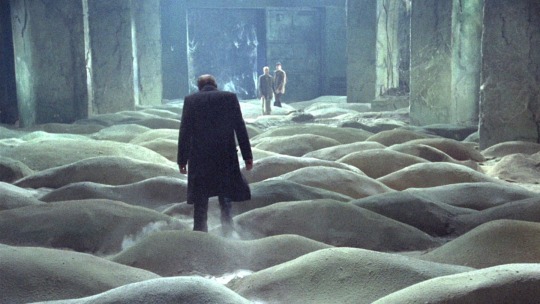
1. Stalker (1979)
For anyone who knows me, it shouldn’t be a surprise that Stalker sits at the top of my Tarkovsky list. As a long-standing and undying fan of science-fiction media, Stalker is without a doubt one of the most grounded and natural science-fiction films I’ve ever seen. The classic Tarkovsky style switches by way of color-timing and color-grading were never better than they were in Stalker, with our journey towards The Zone being punctuated by these bold and jarring shifts in reality. The wonderfully dynamic and kinetically expressive trio of leads provide us with a deep exploration into the different shades of masculinity without succumbing to aggressive energy or pointless posturing. Our leads also give us the opportunity to look into a symbolic presentation of the differences (and similarities) that come with searching for inspiration in both artistic and scientific endeavors, ultimately showing that there is not much difference between both journeys. Every Tarkovsky film manages to show out in terms of capturing landscapes and locations, but Stalker finds a way to illustrate danger and beauty in equal measure in perhaps the most natural way of any Tarkovsky film. The film also has a wonderfully ambiguous ending that leaves your jaw on the floor, leaves the film very much open-ended and, most importantly, leaves you thirsting for more story. I’ve missed a couple of opportunities to see Stalker on the big screen, but one of these days, I hope to remedy that.
#ChiefDoomsday#DOOMonFILM#AndreiTarkovsky#IvansChildhood#AndreiRublev#Solaris#Mirror#Stalker#Nostalghia#TheSacrifice
7 notes
·
View notes
Text
Thoughts : West Side Story (2021)

During last years Academy Awards ceremony, I was sitting there minding my own business when a somewhat familiar New York setting appeared on my screen. Slowly, I saw Jets, I saw Sharks, and when I saw Maria, all of my assumptions became reality : someone was remaking West Side Story. I prepared myself to see what brave soul was taking on the task of remaking such a beloved property, but my entire sense of reasoning got flipped when I saw the name assigned to direct the project was Steven Spielberg. Why, of all people, would Spielberg remake West Side Story, of all movies? Has he ever even made a musical before?
The hype was there, but after a delay or two that pushed the film back to Christmas of 2021, I found that my excitement for the project had pretty much died down to a light casual level. When award season announcements started coming out, I was (and wasn’t) surprised to see West Side Story garner so many nominations, and yet, I could not inspire myself to make a trip to the cinema for a viewing. Once West Side Story hit Disney+ this week, however, I had no further excuses, and seeing that I have been given plenty of time to watch this prior to the upcoming Academy Awards ceremony, I finally carved out a couple of hours and dove in.
youtube
While I did anticipate a modern day remake of West Side Story to be patently edgier than it’s cinematic forefather, I don’t think I was expecting the film to be as hard-nosed and rough around the edges as it was, much to the film’s benefit. As a Bernstein and Sondheim musical, it is nearly impossible to execute West Side Story without the integration of the singing and dancing, but both of these elements are perfectly sewn into the world in the most natural way possible... rather than relying on musical numbers as dressed up exposition dumps, Spielberg (mostly) is able to weave in dance and song numbers while portraying them as genuine moments of personal expression and release, like in the opening where members of the Jets dance through the streets to hype themselves up for a disrespectful stand in their former neighborhood, now occupied by a growing Puerto Rican community. Rather than undercut the rumbles and run-ins by choreographing them as dance numbers, the combat is presented as an 85/15 percent mixture of proper combat and heightened choreography.
The film is extremely raw in terms of its approach to attitude, romance, representation and cultural dedication as well. One of the most noticeable additions to this update is the inclusion of coarse language, with the dated and restrained derogatory terms and coded curse words from the 1961 version of the film being largely replaced with R-rated language. The classic romantic framework that leans on the Romeo & Juliet classic remains, as this adaptation is not necessarily a narrative update, but we really get to feel the tangle of the multiple threads in this version... the love triangle between Maria, Chino and Tony really stands out in this update, while the influence of Bernardo and Anita on Maria is easier for the viewer to sympathize with in this version, making the romance between Tony and Maria that much more tenuous. One other beneficial update is the treatment and presentation of Anybodys... despite her tomboyish appearance in the original, the rampant misogynistic attitude present in the Jets culture would have made her a clear target for assaults of different nature in an update, but based on the current difficult acceptance on a mass level of the Transgender community, having Anybodys present as they/them makes their connection to the Jets being beneficial while also being frowned upon much more believable on a grand scale.
Speaking of representation, Spielberg is (obviously) much more representative and respective of all cultures present in his version of West Side Story... both sides of the conflict are set up to be equally sympathized and villainized, and for those with a sense of self-pride and awareness of their heritage, it is extremely simple to see why all parties involved feel so strongly about maintaining their cultural stake in a rapidly changing New York. Time has made this change that much more of an impending doom factor in Spielberg’s update, as the specter of gentrification that hangs over both communities signals the genesis of a changing New York that looks much more different even now than when the original West Side Story first achieved its time-based classic status. The way that xenophobia, cultural pride and capitalism creates a three-pronged sense of tension within the two communities is also a considerably powerful factor, as we really feel the nature of the brewing hate between both sides, explicitly via Riff’s direct digs and Bernardo’s flippant disregard for his tormentors. While the presence of heritage blinding all sides from protecting themselves from an enemy that should unify them has always been a part of West Side Story, it feels like a showcase element in this updated take on the film.
Spielberg naturally shines on the production side of things, and all of it starts with the extremely distinct look he is able to give the film, which allows it to straddle the line between aged classic and modern take. Just the right level of desaturation gives the entire affair a classic film look, but it is applied lightly enough to let the more vibrant pastels pop while still making them feel in line with the overall aged look. The use of modern cinematic camera moves aids in lifting the overall spirit of the viewer, allowing us to feel proper for a musical despite a restraint-filled approach from Spielberg to the standard musical. The set dressings, wardrobe, hairstyles, vocabulary and accents are all pitch perfect, making the film wonderfully immersive and easy to buy in to. The very precise lighting choices and presentation of set elements allows the film to toe the line of a theatrical, play0like presentation without necessarily allowing the restraining feel of a set to emerge. As mentioned before, the wonderful balance of incredibly organic dance choreography set against the combat choreography makes all of those sequences feel much more natural than they do performative.
He may not be the star or the top billed actor, but Mike Faist is the star of West Side Story, as he turns in a performance that makes it feel like he was literally ripped from the era the story takes place in, down to the defiant anti-authoritarian attitude and undying devotion for the streets, with enough edge to cut a viewer not paying attention. David Alvarez matches all of the intensity that Faist lays out, but offsets it with a deep cultural pride, a complete lack of patience for disrespect and enough cool to package it up and sell it. Rachel Zegler steps up to the lofty challenge of portraying the iconic Maria, and she manages to make all of the innocence, sheltered nature and loving optimism in the face of toxic doubt feel fresh and completely her own. Ansel Elgort feels as if he is stepping into a sort of elder statesman role for his generation, serving as the voice of reason and the example for potential change and evolution for a group of residents that feel as if they’re being pushed out of the place that they belong, with his normally slightly unique look feeling completely at home in West Side Story. Ariana DeBose is a joy as Anita, bringing a wonderfully feisty energy to her role as Maria’s loving voice of reason who understands the passion, but needs the peace. Corey Stoll brings all the heat as Lieutenant Schrank, dropping facts and knowledge to the Jets in the same manner he lobbies disrespect at the Sharks, all the while giving both sides the brutal truth. Stoll’s presence is given additional support by Brian d’Arcy James as the ever maligned Officer Krupke, wearing the strain and stress that comes with being a police officer like a second skin. Josh Andrés Rivera amplifies the burden of unrequited love by also serving as the bearer of bad news, making us completely feel his pain as the stakes rise. iris menas steps confidently into the updated role of Anybodys, showing a complete ownership of the character that gives them newfound agency and pride. Rita Moreno steps in to help crystalize the transfer of energy from the original to the update, while supporting appearances by a host of Jets, Sharks, family and friends help Spielberg complete his vision.
While Spielberg does a standout job directing, it does feel a bit of a rudimentary display to do West Side Story, especially with such classic source material to reference that has stood the test of time. I do understand all of the award fanfare, though it’s crazy that Mike Faist, the one element that deserves breakout praise, has not seen it on the biggest awards stages. All of that being said, I have to give West Side Story the props and respect it deserves, despite my personal feelings on someone as prolific as Spielberg taking on such a seemingly easy choice at this point in his career.
#ChiefDoomsday#DOOMonFILM#StevenSpielberg#WestSideStory#AnselElgort#RachelZegler#ArianaDeBose#DavidAlvarez#MikeFaist#RitaMoreno#Briand'Arcy#CoreyStoll#JoshAndrésRivera#irismenas#MikeIveson#JamilaVelazquez#AnneliseCepero#YassminAlers#JamieHarris#AndréaBurns#CurtissCook#DavidAvilésMorales#SebastianSerra#RicardoAZayas#CarlosEGonzalez#RickyUbeda#AndreiChagas#AdrielFlete#JacobGuzman#KelvinDelgado
2 notes
·
View notes
Text
Ranking : Ralph Bakshi (1938 -present)
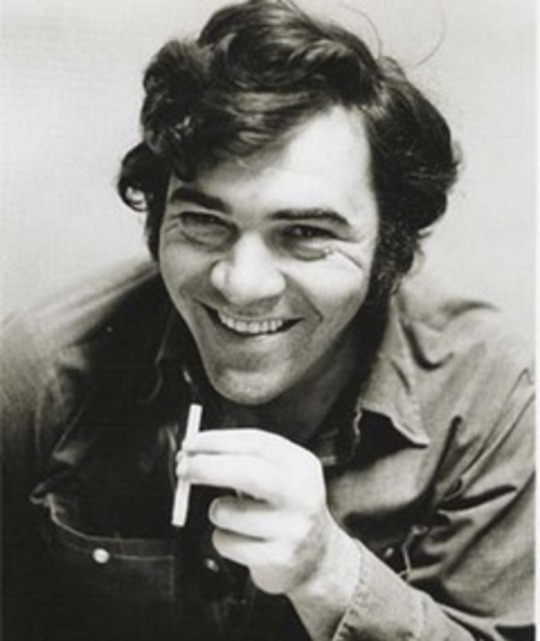
August was progressing, and I found myself in a strange situation where I’d started diving into the catalogs of Andrei Tarkovsy, Mel Brooks and Kathryn Bigelow, but was unable to get any traction on a proper set of rankings. Fearing burnout, I was on the verge of settling for some off the cuff, space-holder of a ranking, like ranking several partial catalogs of directors I need to watch in total, or (God forbid) ranking the directors I’ve previously ranked.
Then, in proper YouTube junkie fashion, inspiration struck, this time in the form of the Folding Ideas channel. Dan, aka Foldable Human, has a wealth of wonderful content on his YouTube page, but when I saw his Ralph Bakshi and The Lord of the Rings video post, I immediately knew who was next in line for the ranking treatment : famed counterculture advocate and adult animation pioneer Ralph Bashki. After a glimpse at his catalog, I knew it was meant to be, as I either owned or had seen everything he directed, and in true DOOMonFILM fashion, had even errantly attributed a few films to him that he had absolutely no involvement in.
When it comes to Bakshi, many things immediately come to mind : rotoscoped animation, harsh race depictions, fantastic music, deeply compelling fantasy and sexually-charged images are all staples of the Bakshi aesthetic. Controversy followed Bakshi for much of the early portion of his career, and more than one of his films found cult success after being deemed box office failures. His interpretation of The Lord of the Rings stood for generations as the definitive visual reference, and his animated take on Fritz the Cat was mutually beneficial, as it made Fritz a more famous character while skyrocketing Bakshi’s career into high gear. His real life persona matches the fantastic nature of his content creation, and Bakshi has never been known as one to hold his opinion to himself or bite his tongue.
With that being said, it’s time to jump into the Ralph Bakshi catalog and rank the films in terms of my feelings on them. This is by no means meant to be a definitive or scholarly list, but rather, a personal share meant to spark conversations. Please enjoy, and don’t hesitate to share your opinions on the legend that is Ralph Bakshi as well.


9. Wizards (1977)
Spoiler alert : as adept as Ralph Bakshi is at science-fiction and fantasy, they really aren’t my cup of tea. In the case of Wizards, the premise is very interesting in terms of post-apocalyptic wizardry and warfare, with one side representing the “natural” while the other represents the industrial. In terms of aesthetic, the film is quite dark, pulling off of some of the same energy that would eventually find its way into the anthology film Heavy Metal, which draws clear inspiration in terms of style and tone from the rotoscope-based work of Bakshi. Perhaps for me, the breadth of the world presented dwarves (no pun intended) the actual presentation, which essentially plays out like a psychedelic storybook. All of Bakshi’s work is worth investigating, Wizards included, but for me, I will need more time with it in order for it to properly resonate.

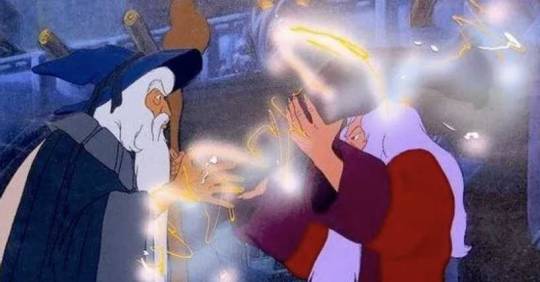
8. The Lord of the Rings (1978)
Though Cool World and Fritz the Cat may give it a run for its money, it’d be an easy argument to state that The Lord of the Rings is the most universally well-known Ralph Bakshi film. Standing as the first on-screen adaptation of the famous Tolkein epic in the wake of a long legal battle to save the property from public domain, the film is a relatively faithful adaptation of its source material. That being said, it appears that Bakshi and the powers that be may have had different ideas about the production going into it, as the film feels like a series of shorter films (making it true to the three books) rather than a coherent single tale. This is speculation on my end, but it’s possible that this shortened scope may have created pressure on the production end, which is evident when it becomes apparent how many different options are used to tell the story that aren’t Bakshi’s traditional rotoscope. This theoretical rush on production also shows in the battle sequences, and with the scale and scope already having been shrunk due to budgetary purposes, having half-hearted swordsmanship makes sequences that are meant to pop fall flat. If you’re curious about this Tolkein epic but you don’t feel like reading three books or essentially watching a day’s worth of Peter Jackson films, then the Bakshi version will certainly suffice, but if you’re on a Bakshi hunt, there are better films out there in my opinion.

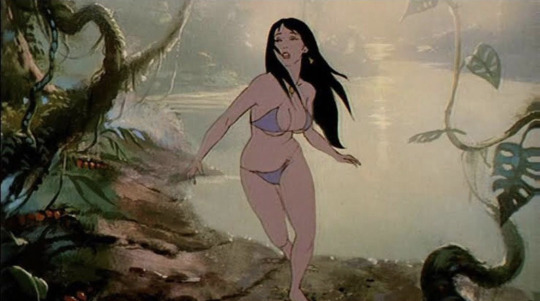
7. Fire and Ice (1983)
Of all the Bakshi fantasy offerings, Fire and Ice is far and away the style champion. The combination of Ralph Bakshi animation and Frank Frazetta illustration is stunning, and all of the main character designs are instantly iconic. The juxtaposition of opposite elements (fire and ice, in this case) works a bit better than the nature versus technology setup of Wizards, and the story is much more direct, with this streamlined nature providing the narrative with a natural momentum that pushes Lam’s hero’s journey forward. The symbolism of Darkwolf as a sort of warrior-cupid figure is an interesting insertion as well. As previously stated, my preferred Bakshi is the urban spectrum of his catalog, but if I had to choose one Bakshi fantasy film, it’s Fire and Ice, hands down.


6. Hey Good Lookin’ (1982)
By the 1980′s, Ralph Bakshi had slightly taken the gas off of his urban stereotypes, descending from the heights of true indifference to the opinions of others on his work down to a level where it seemed Bakshi may have found personal entertainment in ruffling feathers. For Hey Good Lookin’, Bakshi symbolically turns his urban mirror on himself, delving into the world of greasers and mafiosos rather than that of Black culture via gangsters, drug dealers and thieves, which may have been in reaction to his extreme portrayals of the Brer Rabbit mythos in Coonskin. I never put two and two together until recently, but Hey Good Lookin’ borrows heavily from Mean Streets, right down to the Vinnie and Crazy Shapiro dynamic mirroring many aspects of the Charlie and Johnny Boy dynamic. The music is pretty good in this film, as it heavily borrows from the Scorsese approach as well... in all honesty, this film is essentially the Bakshi take on the Scorsese 1970s classics. Even the least interesting Bakshi urban picture has more heart, controversy and raw energy of any live-action gangster film, which makes Hey Good Lookin’ respectable, but Bakshi has definitely done the genre more justice with his previous works.

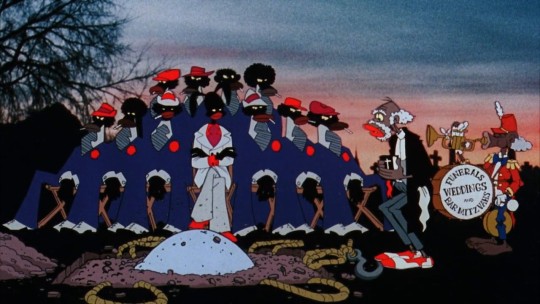
5. Coonskin (1975)
Coonskin holds many distinctions in the Bakshi catalog... it’s easily the most divisive of all his movies, it may be the most clever adaptation he has presented to the masses, and it easily contains the most high profile cast of all the Bakshi films, with Philip Michael Thomas, Charles Gordone, Barry White and Scatman Crothers all playing major roles in the film. With the imagery connected to the film, it’s easy to see why many people have a visceral knee-jerk reaction to the movie, many before having every even seen it, up to and including the Congress of Racial Equality. When the shock of the deeply black skin tones and reckless violent abandon wears off, however, we are left with a story very similar to Ridley Scott’s American Gangster that perfectly connects to the Brer Rabbit tales, resulting in a narrative that takes a deep and hard look at systematic racism, oppression and economic disparity, particularly how they are interconnected in a manner that traps the unfortunate. The symbolism and style are heavy in this film, and the imagery is extremely bold, but don’t let all of that fool you : Bakshi is in tune with the African-American experience in a way that many choose not to be, and even if his methods of creativity are tough to swallow at face value, his root message is one of understanding and deep sympathy.


4. Fritz the Cat (1972)
For many people my age, one of the first truly eye-opening pieces of media that blurred the line between the innocent world of children’s programming and the seedy underbelly of adult programming was the salacious Robert Crumb character turned Ralph Bakshi debut film Fritz the Cat. Meant explicitly to help push the medium of animation into a more adult realm, Bakshi used the character of Fritz the Cat to spin tales centering around aspects of college and counterculture life such as sex, drugs, profanity and generally reckless behavior rather than the innocent tales that animation generally presented up to that time. Bakshi’s career prior to Fritz the Cat centered heavily on animation grunt work, but with the film making $90 million worldwide on a $700,000 budget, Bakshi immediately became the rising star of the animation world, especially in regard to the world of adult animation, which he helped bring to the popular culture forefront. Fritz the Cat is a little rough around the edges, and at times it leans on very basic stereotypes like a crutch, but when its all said and done, the charm of Fritz the Cat rises above all other aspects. Though the sequel, The Nine Lives of Fritz the Cat, is a bit more my speed, it unfortunately had nothing to do with the Crumb or Bakshi camps, hence its exclusion from this list.

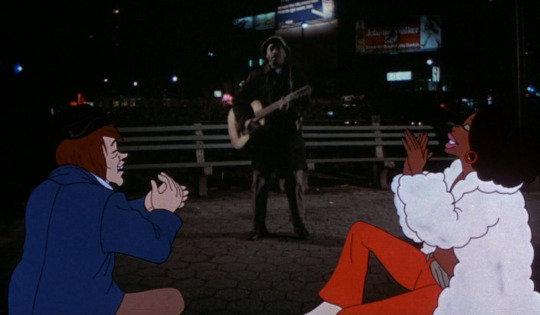
3. Heavy Traffic (1973)
With a coming out party like Fritz the Cat under your belt, it would be easy to fall victim to the sophomore jinx. This wasn’t the case for Ralph Bakshi, however, as he made a deceivingly ambitious follow-up film that mixes aspects which would later appear in my two favorite Bakshi films. First and foremost, the film is a bold mixture of live action and animation, with an almost equal balance of the two shifting back and forth during the viewing experience. The blends go both ways (animated characters in real settings and vice-versa), and most are done in enough of an artistic manner to make the blends aesthetically pleasing rather than distracting. Secondly, the deeply personal story of the Michael character feels like he could exist in one of the earlier sequences of American Pop, with Michael’s tug of war between the Mafia life and his burgeoning love for Carol mirroring many of the oppositional pulls that nearly every member of the Belinsky bloodline face. The overarching symbiology of the crime-laden streets as a gigantic pinball machine works extremely well, as it not only mirrors the hectic hell that Michael and Carole face, but it bookends the movie’s live-action start and stop. This wasn’t the first Bakshi film I saw, but it was the first one that I owned when I found a cheap copy used in a record store, which instantly gives it a special place in my heart.


2. Cool World (1992)
For many people, this stands as the crown jewel of the Ralph Bakshi catalog. When it comes to mixing live-action and animation, Bakshi is no stranger, and while Who Framed Roger Rabbit? put itself light years ahead of anyone in the live-action/animation realm, Cool World marked an interesting return to form and amplification of style for Bakshi. Kim Basinger and Gabriel Byrne were already stars in their own right, and they certainly brought their star power to the table, but Brad Pitt found Cool World to be one in a series of breakout films for him, moving him from featured extra roles to supporting roles, and within 5 years of Cool World, lead roles. In terms of the narrative, Cool World serves as perhaps the most meta of all Bakshi creations, with the entire story centering around a cartoonist trapped in a world of his own creation, all of which is wrapped inside of a grief-driven escapist reaction to a traumatic event. Cool World marked a return to directing after a 9 year absence, and unfortunately, it’s been the last feature film the world has received from Ralph Bakshi. If we’re lucky, we may get one more project before he’s gone, but if Cool World marks the endpoint of the Bakshi animated journey, so be it in all of its glory and dark beauty.

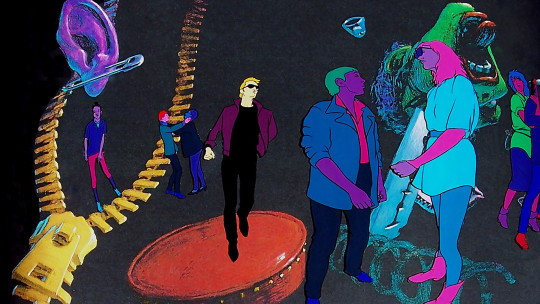
1. American Pop (1981)
I’ve been a film fan for most of my life, but I’ve been a music fan my entire life, which makes it crystal clear why the infinitely moving American Pop stands as my favorite Ralph Bakshi film. The film centers around four generations of the Belinsky family, spanning from 1850s Imperial Russia right up to the modern day (or at least the day that was modern as of the film’s release). This journey of a Russian Jewish immigrant family into the U.S. directly reflects the personal experience of Bakshi, which in turn makes the story pop with a sincerity and honesty that is usually sacrificed for exploitation or the fantastic in other Bakshi films. As we march through the ages, the Belinsky family (and their musical talents) allow us to take a parallel journey with the growth of American music from the Vaudeville era, through the Jazz and Psychedelic Rock eras, and directly into the world of Punk music and Stadium Rock. The multitude of animation styles used in tandem with the wide variety of musical stimulus creates a pleasant assault on the senses, with several sequences having permanent real estate in my head to this day. I’ve shared American Pop with many, many friends, and as far as my sphere goes, the vote is in : American Pop is a bonafide classic that is more than deserving of your time and attention.
#ChiefDoomsday#DOOMonFILM#RalphBakshi#FritzTheCat#HeavyTraffic#Coonskin#Wizards#TheLordOfTheRings#AmericanPop#HeyGoodLookin'#FireAndIce#CoolWorld
8 notes
·
View notes
Text
Review : The Power of the Dog (2021)
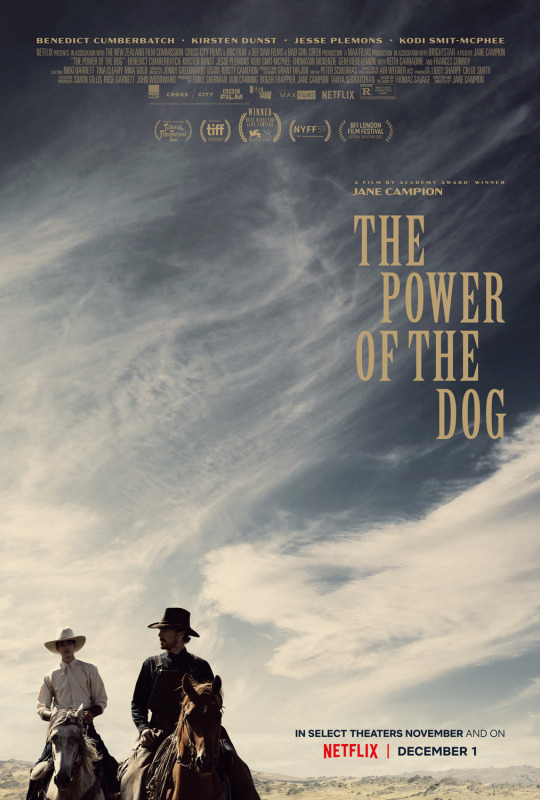
Having a film pop on one radar is normally enough for me... I had noticed The Power of the Dog on different lists of 2021 film releases, and of course, as a Netflix user, I saw it listed in my queue, but other than making the list, my interest was not piqued. Then, earlier this week, the Golden Globes dropped their list of nominations, and The Power of the Dog was all over the film categories, and immediately, the film jumped up my list. While prepping, I noticed that Thomasin McKenzie was a member of the cast, and after her performance in Last Night in Soho, I was fully hooked and on board for a viewing.
youtube
Maybe it’s just due to the fact that the Old West is a long bygone era, but outside of the highly stylized films in the Western genre, most Western movies have an ingrained sense of tension baked into them... perhaps it’s due to the sense of despair that comes with living by your wits in a world of have-nots, or perhaps it’s due to the built-in patriarchal code of ethics that comes with the gunslinger and cowboy era, but even the most mundane goings on feel potentially explosive. That being said, there is something about The Power of the Dog that encompasses this aspect of the Western in spades, and all of this is present from the opening moments based on a combination of how the story arc that Benedict Cumberbatch, Jesse Plemons and Kirsten Dunst share is set up both visually and purely based on physicality. As the narrative unfolds, we get touches of classic Western aesthetics and practices thanks in large part to Cumberbatch’s all-in sinister nature as Phil Burbank that stand in stark contrast to the modernity and humanity that unfolds in the path that is shared between Dunst’s Rose Gordon and Plemons’ George Burbank. While George displays good intentions, he seems much more aware of the rift between himself and Phil than he does how much he’s disrupted Rose’s world by putting her in the center of attention spot in a time where not only most women tend to “know their place” (at the risk of using an outdated term), but also by trying to steer her out of the deep protective focus for her son Peter without so much as asking her thoughts on it, which is doubly ironic when considered that the connection between George and Rose was sparked because of Peter and Rose’s shared hurt.
Seeing romantic and controversial aspects of Western life through the lens of Jane Campion adds new shades to the collected familiar tales we’ve come to be familiar with, and her passion as a writer/director shows in the work presented. The romantic arcs in The Power of the Dog turn the concept of the Bechdel Test on its head by forcing the male characters to be the ones that deal with emotional waves on a raw and visceral level, while leaving Rose Gordon to be the tragic figure that falls apart under the weight of expectations and pressure. George Burbank is propped up as the male of the future who is seemingly in-touch with his manhood and femininity, while Phil is put forth as a more stereotypical male figure who is unable to face their deep-rooted issues, and therefore, is prone to misplacing their aggression by way of verbal and physical lashing out. In light of these initial setups, Peter Gordon is brought into the picture as a literal slap in the face to Phil based on how in-touch he is with himself at such a young age, and from Phil’s perspective, how the characteristics that Peter cherishes fly in the face of the male image. Based on the triangular setup of the main leads with Phil as a satellite element, layers upon layers of conflict and tension emerges that not only brings the viewer lots of discovery, but creates a rewarding narrative ripple effect that moves the story forward.
One of the immediate standout aspects of the film is the cinematography of Ari Wegner, whose highly stylized plains photography, multi-level focused wide shots and deeply uncomfortable close-ups not only capture beauty, but fuel tension right from the beginning, even when one can’t put their finger on what they should be uneasy about. The score goes great lengths in keeping the tension palatable as well, with alternating small groupings of instruments and solo offerings that hit dissonant notes doing much of the heavy lifting while sparse symphonic interjections do the bridgework. The Power of the Dog has some of the strongest capture of natural lighting and candle-based lighting that I’ve seen and years, and when night falls (or we find ourselves in less fortunate locations), the work done with shadows and sparse lighting is downright phenomenal. While this film dwells in more of a low key world outside of the outlaw life, it must be noted how elaborate the costuming, hair and make-up is in the appropriate areas, with just as much focus given on the cowboy costuming in order to create a natural order that is immediately recognizable upon sight. Breaking the film up into chapters helps pace things out beautifully, allowing for each particular element to get weighted moments before they shift into both predictable and unforeseeable directions.
Benedict Cumberbatch turns in one of the most moving and dynamic performances of the year, straddling the fence perfectly between posturing male toxicity and a man deeply afraid to face a true nature he tries to inwardly embrace while hiding it outwardly based on his societal positioning. Jesse Plemons helps to fade the initial heat off of the Cumberbatch arc by playing the sympathetic white knight with an honest nature that is sadly unaware of any damage he does that doesn’t impact his pocket. Kirsten Dunst goes to pieces under the pressure of expectation in a secret manner while displaying innate motherly instincts in the hopes of protecting her character’s son. Kodi Smit-McPhee exudes shades of youthful innocence, but much like the motherly character Dunst portrays, McPhee’s son characterization also hides much of his truth beneath a public veneer that is partly self-aware and partly based on self-protection. Genevieve Lemon and Thomasin McKenzie bring light touches of comedic joy to a deeply moody household. The cast is rounded out by brief appearances for characters that hold weight in the Burbank world, including Keith Carradine, Frances Conroy, Peter Carroll, Alison Bruce, Sean Keenan, Adam Beach, Maeson Stone Skuccedal, Alice Englert and many more.
It’s not surprising that The Power of the Dog made such a strong nomination showing for the upcoming Golden Globes ceremony, as that particular ceremony is strongly fueled by the non-technical aspects, and The Power of the Dog shines in terms of performances. I won’t be surprised if the film gets a Best Cinematography nod for the Oscars on top of the near categorical nomination sweep it has achieved at the Golden Globes. This is a huge step in the right direction for Netflix as a production house, and if Campion and company are able to bring some statues home this award season, it could bolster the quality of output we see for the long run.
#ChiefDoomsday#DOOMonFILM#JaneCampion#ThePowerOfTheDog#BenedictCumberbatch#KirstenDunst#JessePlemons#KodiSmit-McPhee#ThomasinMcKenzie#GenevieveLemon#KeithCarradine#FrancesConroy#PeterCarroll#AlisonBruce#SeanKeenan#AdamBeach#MaesonStoneSkuccedal#AliceEnglert
4 notes
·
View notes